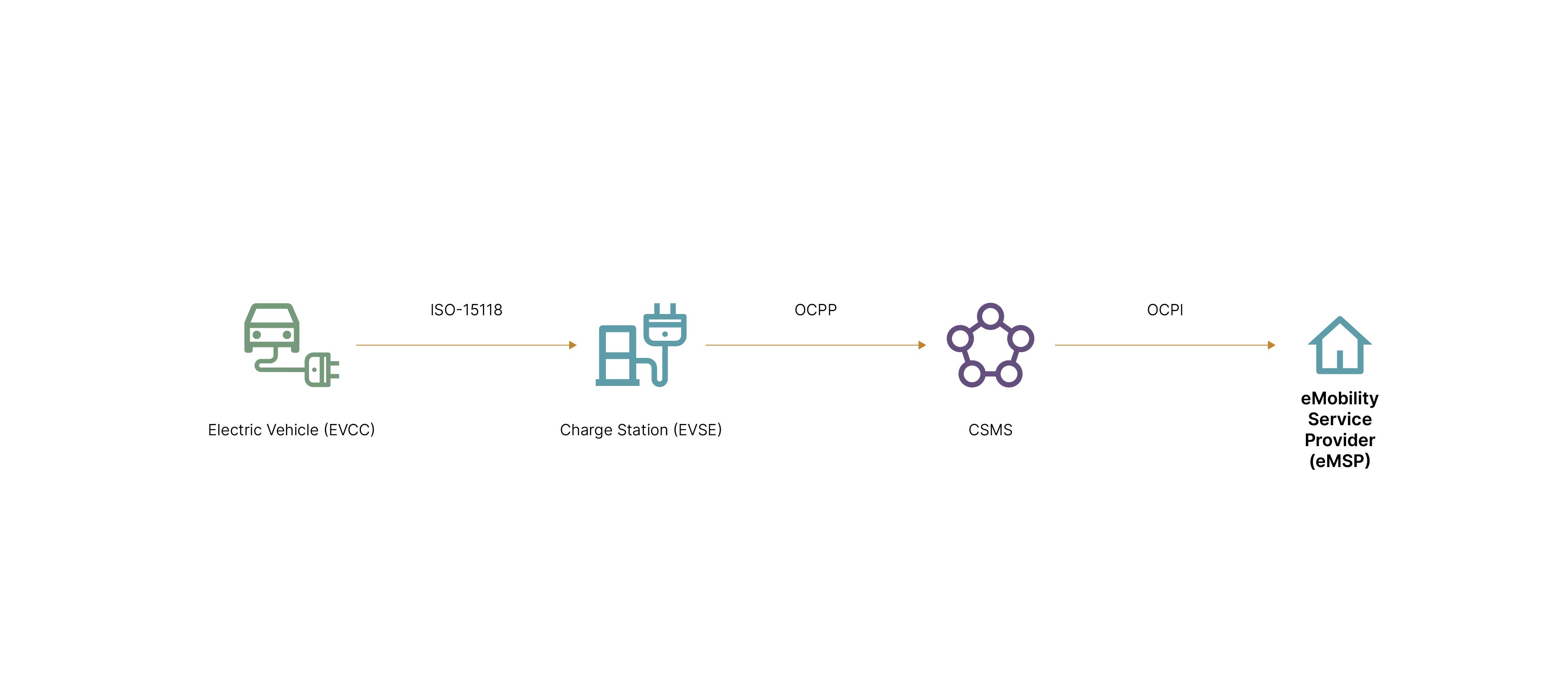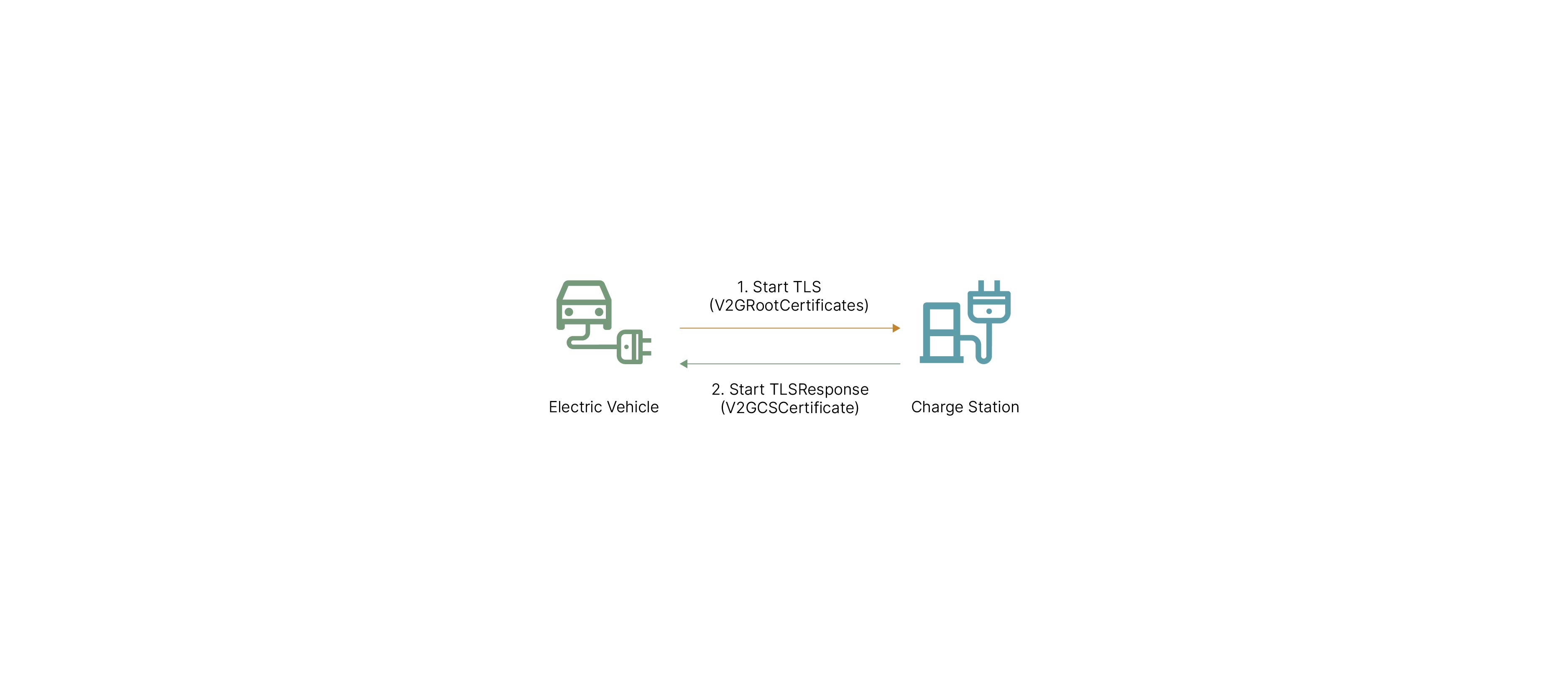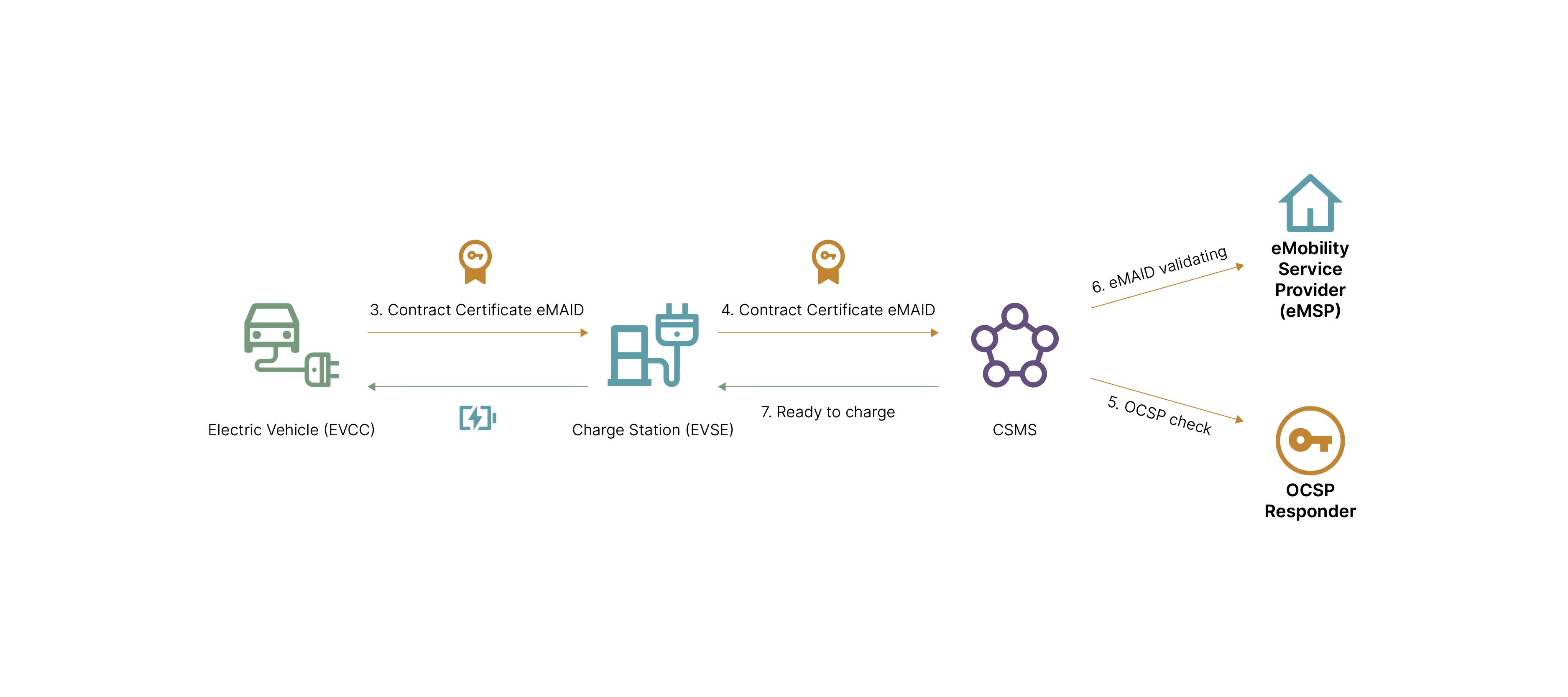In the world of electric vehicles (EV), the process of charging isn’t straightforward. To some extent this isn’t that surprising — as a relatively new automotive technology, it obviously lacks the same level of infrastructure that is in place for established Internal Combustion Engine (ICE) vehicles. This means vehicle owners typically have to go through a series of manual steps to authenticate and pay for charging, and will often have to juggle various RFID/contactless cards or charging network apps. Fortunately, a new standard, called Plug and Charge (PnC), has been introduced in a bid to make EV charging much easier.
However, although PnC provides a much more user-friendly way of charging vehicles, such simplicity obscures increased complexity from a technology and implementation perspective. In this post I’ll outline precisely why PnC can be so challenging, and highlight how the end-to-end process works.
Why is plug and charge challenging?
The main challenge of PnC is a lack of understanding across the industry about the way that EVs are authorized with charge stations. This is for a number of reasons:
Fragmented specialization: Professionals in this area have typically specialized in specific components of the system. This means that few people have a holistic understanding of the complete authorization flow.
A diverse protocol landscape: The authorization workflow requires the integration of multiple protocols — including 15118-2, OCPP2.0, and OCPI. Each one of these is complex; understanding how they fit together requires concentrated effort.
Conceptual complexity: PnC also requires understanding concepts like Public Key Infrastructure (PKI). This could be particularly challenging for someone who specializes in another completely different domain, such as hardware.


Some fundamental concepts
Given the complexity of PnC, establishing the fundamentals is important. So, before going further into how the authorization flow actually works, I’ll outline some of the basic elements that are required.
The graphic below demonstrates the key elements and the protocols that connect them.


Let’s take a look at these in a bit more detail:
The Electric vehicle communication controller (EVCC) is a device used to connect an EV to a charging station.
Electric vehicle supply equipment (EVSE) is an independently operated and managed part of the charging station that can deliver energy to one EV at a time. It is also known as supply equipment communication controller (SECC).
The charging station management system (CSMS) is a backend for the charging station. When an EV plugs into a charge station, the charge station connects to the CSMS which then initiates the charging process. It’s a bit like the charging station’s brain, assisting with tasks such as upkeep, billing and the overall function of charge stations within a charging network.
- e-Mobility service provider (eMSP) is responsible for managing subscriptions, payments and generating bills to the end user (ie. the vehicle owner). This is something you subscribe to when you buy an EV. The eMSP performs a number of functions: it assigns a unique identifier to the EV, known as an e-mobility account identifier (eMAID) (which indicates an active subscription held by the EV owner), and also creates and signs the contract certificate for the EV.
There are many other components involved in PnC — the above are just the fundamentals. However, given their importance, in the sections below we will explore them in more depth to set out the core elements of PnC that you need to know to get started.
As the graphic above indicates, there are also different protocols that facilitate communication between these components. ISO-15118 is used to enable communication between EVCC and EVSE communication, OCPP 2.0 for communication between the charging system and CSMS communication, and OCPI for CSMS-eMSP communication. Each of these protocols have a certain amount of complexity that I won’t explore here; I’ve included links to each so you can find out more information from the bodies responsible for them.
A further integral element of PnC is something called public key infrastructure (PKI). PKI can be complex, but in simple terms it is a system that helps facilitate secure online communication between the two parties using encryption and digital certificates. Digital certificates allow parties to verify each other’s identities and establish an encrypted connection.
In the context of PnC, the certificates that matter in the process are:
V2GRootCertificate: This is the root certificate for ISO-15118. It plays a key role in secure connection between the EV and charging station.
V2GChargingStationCertificate: This is a charging station certificate derived from the V2GRootCertificate. It’s used to set up a Transport Layer Security (TLS) connection between the charging station and an EV.
MORootCertificate: This is an eMSP root certificate that supports PnC charging with contracts from service providers that did not derive their certificates from the V2GRootCertificate.
- ContractCertificate: This certificate is needed to prove the EV’s identity. It can be derived from either MORootCertificate or V2GRootCertificate.
How is an electric vehicle authorized in PnC?
An EV gains authorization with a given charging station when its contract certificate is validated. This certificate acts as its proof of identity. The contract certificate needs to be provisioned and installed in the vehicle before it can be authorized and begin charging. As mentioned above, these certificates are generated and signed by the eMSP and then securely installed in the vehicle.
Let’s now look at how the process actually works. The steps below depict the sequence of messages that are exchanged between each component.


First, the EV initiates a TLS connection with the charging station. It presents a known list of V2GRootCertificates.
The charging station then sends back its V2GChargingStationCertificate derived from one of the V2GRootCertificate, along with its OCSP revocation status. The OCSP revocation status indicates the validity of the certificate. This can be requested by the charging station from CSMS before the TLS handshake and can be cached at the charging station. The certificate along with OCSP status are then validated by the EV using the corresponding V2GRootCertificate.
The EV then authorizes itself by sending a ContractCertificate — possibly the whole certificate chain up until root — and an eMAID.
If the charging station possesses the root certificate, it validates the ContractCertificate. If it doesn’t, it’s forwarded to the CSMS along with the eMAID.
The CSMS validates the certificate and checks for its revocation status from the OCSP responder. There could be multiple reasons for the revocation. For example, authorization could be revoked if the private key of the corresponding certificate is compromised.
Even if the certificate is mathematically valid, the validity of the corresponding billing account also needs to be verified. This is done by validating the eMAID with the eMSP.
If all the steps are successful the CSMS responds with an accept message. The EV can now begin charging.


The graphic above illustrates the end-to-end authorization flow. Although the specific implementation may vary somewhat depending on how components have been designed and implemented, the process should broadly be the same regardless of variations.
Looking ahead
Hopefully this piece has given an indication of some of the technical complexities of PnC. While it is undoubtedly important that we build a holistic understanding of the components and protocols involved, in lieu of such expertise, cross-functional teams are particularly valuable for implementing PnC.
It’s important to also note that there are, unfortunately, further challenges that the industry needs to address. Most charging stations and EVs, for instance, don’t support the latest protocols — significant effort (and investment) is needed to upgrade them — while the protocols themselves are only in the early stages of development, leading to a lack of uniformity and compatibility.
Combined, these issues contribute to the complexity of PnC. PnC helps hide the complexity of the flow from the users, which comes at the cost of its own complexity. Getting this right will ultimately bring significant benefits to the EV world as it will greatly streamline the charging process.
If EVs are to be the future of automobility, PnC has a critical part to play in underpinning the infrastructure needed to facilitate widespread adoption.
Special thanks to my colleagues Ian Murdoch, Dale Peakall and David Vanbeylen for sharing their valuable insights and providing expert guidance. Thanks as well to Richard Gall and Tom Holbourn for their editorial support.
Disclaimer: The statements and opinions expressed in this article are those of the author(s) and do not necessarily reflect the positions of Thoughtworks.


















